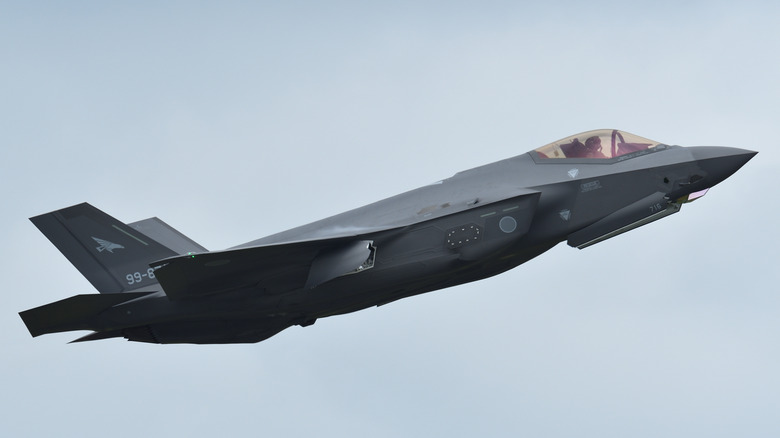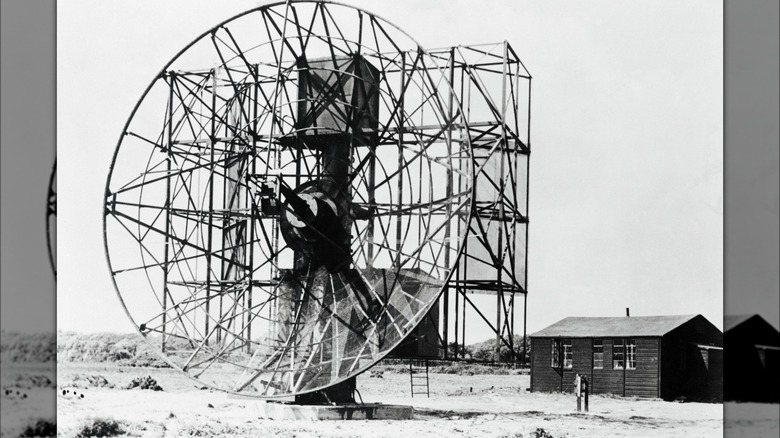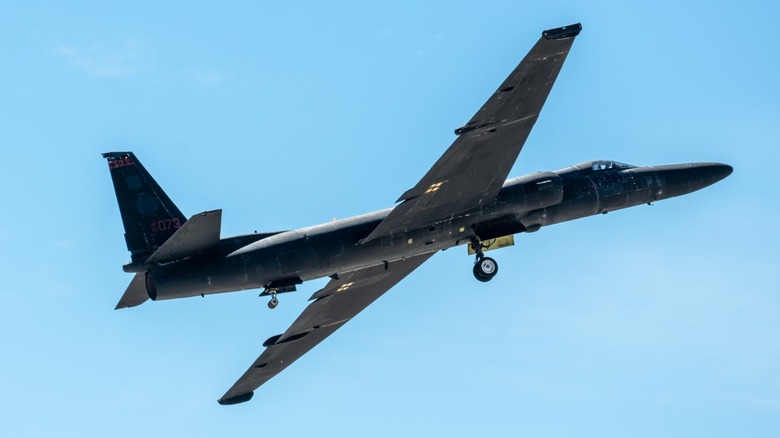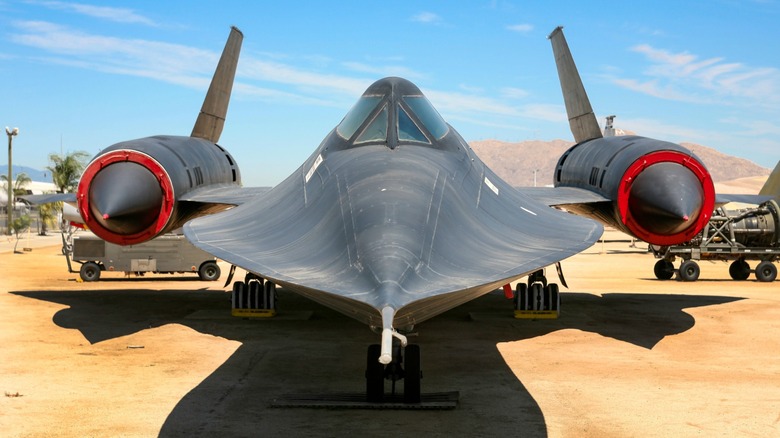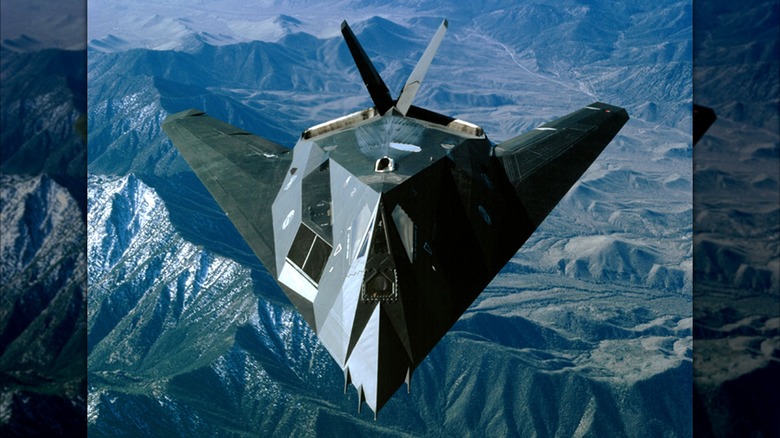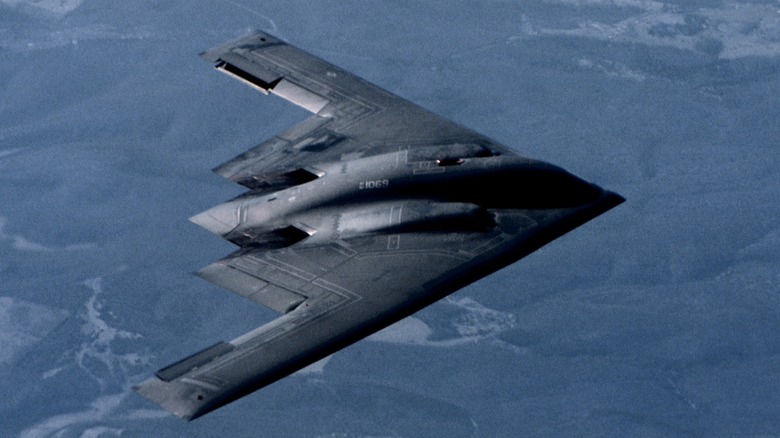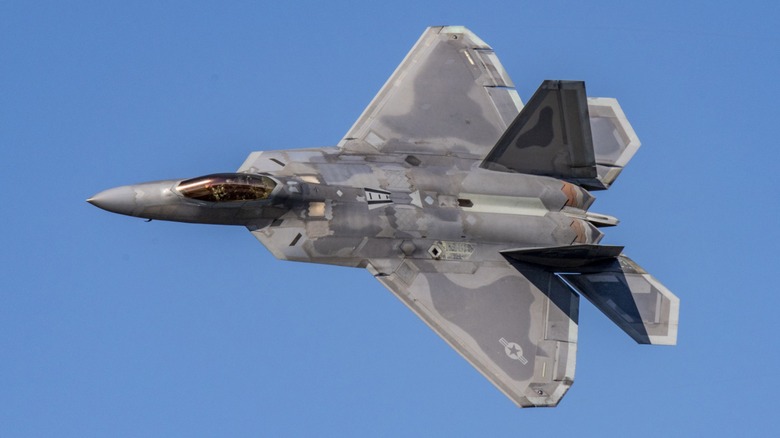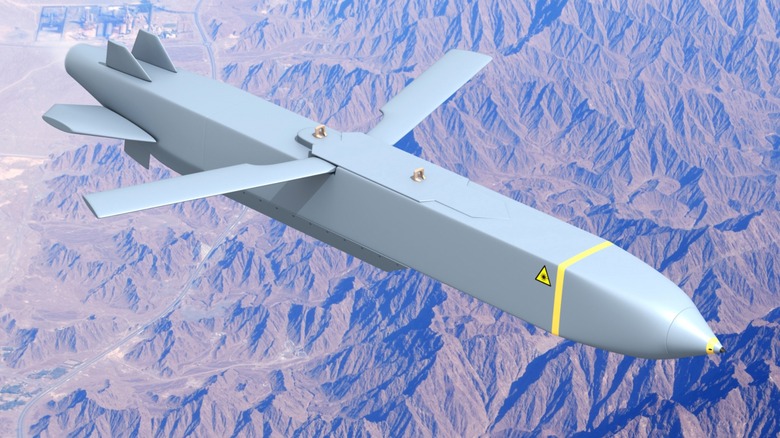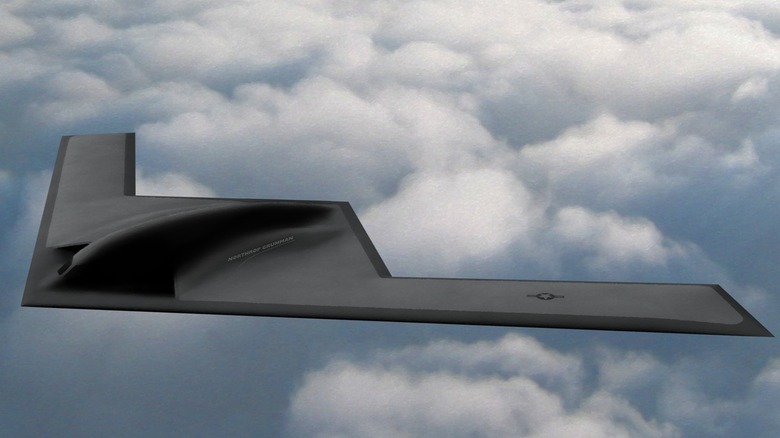The Science Behind Stealth Technology In Military Aircraft: How It Actually Works
The advent of military aircraft has been perhaps the most defining feature of modern warfare. Since being introduced during WWI, military aircraft have supported ground forces in ways never imagined possible for thousands of years of human history prior to that event. Since then, the technology has rapidly progressed, with governments pouring in resources to ensure their aircraft are better than those of their adversaries.
Airplanes in WWI were originally only used for reconnaissance, although they were soon equipped with guns and have been tactical strike weapons ever since. Technology continued to make aircraft more powerful and more effective weapons, but the introduction of radar in WWII made the use of attack aircraft instantly more precarious.
The Cold War put a laser focus on creating aircraft that could enter enemy airspace undetected, whether for reconnaissance, bombing runs, or direct forward strikes. This led to a variety of technologies emerging, but one has now been broadly implemented with successful outcomes. Using a combination of underlying technologies in the process of military aircraft manufacturing, modern military aircraft can be largely undetectable to radar. This is referred to as stealth technology, and here, with a little bit of background information, is how the science behind it actually works.
The emergence of radar and how it works
World War II was a time of rapid innovation. With a need to defend against a formidable enemy and eliminate the threat posed by it, Allied forces worked around the clock to develop science that could be turned into technology to aid the war effort. One of the most important developments was radar, which uses an acronym for radio detection and ranging as its name.
The research in radio waves used to create radar originated in the late 1800s, but one of the first applications for locating aircraft officially went online in 1940 to secure the coast of Britain. By transmitting radio waves into the atmosphere and listening with a receiver for those waves to return after bouncing off of objects in the sky, operators could determine the location of enemy planes and at what speed they were traveling. With this tool, the British could detect incoming German squadrons up to 75 miles away, changing the outcome of early engagements in the war, particularly the Battle of Britain.
Despite the technological achievements of the Allies, the Germans had developed their own system concurrently called Freya, first deploying it in 1938 and leading to a cat-and-mouse game of improving technology that continued through the rest of the war. The competition between the Axis and Allies ended in 1945, but the emerging Cold War meant that technological rivalry would continue to be a prominent part of geopolitics until the current day. Radar is still used today, and although it is far more advanced and capable than it was in 1940, the fundamentals of the technology remain the same.
How the need for stealth was identified
With few direct engagements between the Soviet Union and the United States throughout the Cold War period, reconnaissance became a top priority for defense officials. The United States developed the U-2 spy plane with the ability to fly over the Soviet Union undetected, but it relied on an extremely high flight ceiling to operate beyond the range of radar rather than true stealth technology. Creating planes undetectable by radar continued to be a crucial part of aircraft research and engineering, prompting concerted efforts to find solutions by scientists and engineers at places such as Lockheed's Skunk Works division.
The U-2 spy plane first flew in the mid-'50s, providing crucial photography of military movements and installations in the Soviet Union. However, the flights over Soviet territory ended when Gary Powers was shot down in 1960. Soviet agents had infiltrated the U-2 program and relayed flight information to the KGB, leading the Soviets to shadow Powers with MiG fighters that helped direct a successful SAM strike against Powers. This led the Central Intelligence Agency to lean on Lockheed to develop a new type of aircraft with a significantly reduced radar cross section (RCS).
Development of stealth tech
While the U-2 used altitude to avoid detection, it is in no way a stealth aircraft. The first technologies developed to reduce radar detection were radar-absorbing coatings and coverings, and the first model to receive stealth technology was the Lockheed A-12 flown by the CIA and eventually developed into the Air Force's SR-71 Blackbird. It followed in the footsteps of the U-2 by having a service ceiling of 85,000 feet and, perhaps more importantly, a top speed of Mach 3.3, making it the fastest jet ever flown.
The SR-71 is instantly recognizable by its distinctive shape and matte black finish. The stealth technology incorporated into its airframe includes composite materials for the tail fins and leading edges, its distinctive shape, and the black paint infused with ferrite particles to aid in radar absorption. Furthermore, the JP-7 jet fuel used in this jet was laced with cesium, creating a cloud of plasma to further reduce its RCS and hide the huge exhaust plume from the engines.
This aircraft served for decades, operating over missions in Vietnam and the Middle East, all without losing a single plane. Its success pushed aviation designers to usher in the next wave of stealth aircraft that are today the hallmark of a modern air force.
Implementation of stealth on modern aircraft
Stealth must be fully incorporated in the design of an aircraft from the very beginning for it to be effective. Some airframes can receive upgrades with Low Observable stealth-like enhancements, such as the U.S. Navy's F/A-18E/F Super Hornets, but will never appear as small as a pigeon on radar.
The shape, materials, engines, and equipment must all be designed together with a single focus of scattering radar signals away from the plane. A round fuselage will reflect radar signals from any point over the arc of the curve, ensuring detection. To avoid this, flat surfaces and sharp creases are used to intentionally reflect that signal in another direction so it will not bounce back to its receiver. This is what led to the odd angular shape of the F-117 Nighthawk, the first true stealth fighter jet of the U.S. Air Force.
To make the jet invisible to radar, it uses almost all flat surfaces, and the reason why its shape is so peculiar is that the advanced computers used to design modern stealth aircraft today did not exist. The F-117 is the best technology could do in the 1970s. With successive aircraft, advanced computer-aided design has allowed engineers to create more conventional-looking planes that maintain small RCSs, although they still utilize flat surfaces far more than non-stealthy airframes.
Aircraft utilizing stealth
The list of planes being designed with full stealth capabilities started with the F-117 Nighthawk and continued with the B-2 Spirit, F-22 Raptor, and F-35 Joint Strike Fighter. A common attribute of all of these planes is the lack of a vertical stabilizer and rudder.
The design of stealth aircraft carefully omits any surfaces prone to radar detection, including engine inlets or surfaces of adjoining parts with right angles. This is why twin stabilizers are set at aggressive angles and engine inlets are never uniform rectangular or circular holes. Every crease on an airframe is carefully calculated to scatter radar signals. The result is that the RCS of the F-35, for example, makes it appear no larger than 0.005 m² — just a bit larger than a hummingbird.
American aircraft are not the only stealth fighters in the sky, although they dominate the field. Soviet technology has lagged far behind the West, leaving Russia without a stealth aircraft until 2019. Even then, its Su-57 pales in comparison to Western technology as its RCS is about 1,000 times larger than the F-35 at somewhere between 0.1 to 1.0 m².
Furthermore, Russia has less than 20 hand-built stealth fighters in its fleet, while the U.S. has already produced hundreds of F-35 aircraft. A planned Su-75 Checkmate has yet to make it into production. Otherwise, China has produced its Chengdu J-20 stealth fighter in moderate numbers.
Successes and failures of stealth aircraft
The SR-71 flew dozens of sorties over Vietnam during its service, although it likely used its extreme speed more than stealth abilities to evade its adversaries.
The next usage of a stealth fighter was the engagement of the F-117 Nighthawk. The aircraft was first deployed in Panama in 1989, dropping bombs near defense force barracks to facilitate surrender. However, it was in Iraq during Desert Storm where the Nighthawk proved its capabilities, speeding past Iraqi defenses and leading to the overwhelming of Iraqi forces. The F-117s again saw action over the Balkans during the breakup of Yugoslavia, but Serbian radar detected an F-117 in the air with its weapons bay doors opened and launched a surface-to-air missile, striking the Nighthawk and downing the aircraft.
B-2 Spirits flew many missions over Iraq, while F-22s later served in engaging targets of ISIS. Today, the F-35 Joint Strike Fighter is the premiere multirole fighter in multiple branches of the American Military and is in service in squadrons of many NATO member nations. Although Russia should have an opportunity to use its stealth Su-57 in its campaign against Ukraine, reports of successful missions are scant.
Other stealth applications
Although stealth tech was developed for aircraft, it is not limited to fighter jets and bombers. The most recent development of stealth construction has appeared in the widening array of unmanned aerial vehicles, often referred to as drones. The list of UAVs using stealth tech is not so straightforward to produce. The U.S. has developed the RQ-180 and XQ-58A Valkyrie, which have both been put into service. Furthermore, many more companies globally have entered the UAV business, and many of them could be built using stealth elements. Baykar of Turkey has shown much promise with the success of its products in Ukraine.
Another area that benefits from stealth construction is weapons production. Cruise missiles undetectable to radar pose a significant threat to adversaries unable to track them down with advanced warning systems. One such example is the jointly produced Storm Shadow from France and the U.K, which uses stealth tech along with a low cruising altitude to evade detection. These have recently been given to Ukraine for its defense and have been used successfully against the forces occupying its territory.
In addition, another recent adaptation of aero stealth technology has been into naval weapons and stealth shipbuilding, making a gunboat or even a destroyer appear on radar to be no more than a small fishing boat.
The future of stealth technology
Building stealth aircraft at this point should be the obvious area of growth for military aviation alongside innovation in unmanned vehicles and weapons technology. These things have already been implemented and more will be on the way. However, with new offensive capabilities coming online, diligent defense ministries will be looking for the next generation of early warning systems, and radar could be supplanted by something even more powerful.
The United States is already building its next-generation bomber to replace the B-2 Spirit, the B-21 Raider. Russia has displayed its Su-754 Checkmate next generation of stealth fighter jet, but a lack of flying prototypes makes its serial production dubious, especially with the poor quality of its existing Su-57. The biggest developments of stealth are likely to occur simultaneously around the world, with advanced fighters under development in Turkey, India, South Korea, and elsewhere. Nobody knows what the future holds, but the continuing development of stealth aircraft is sure to play an outsized role in it.
